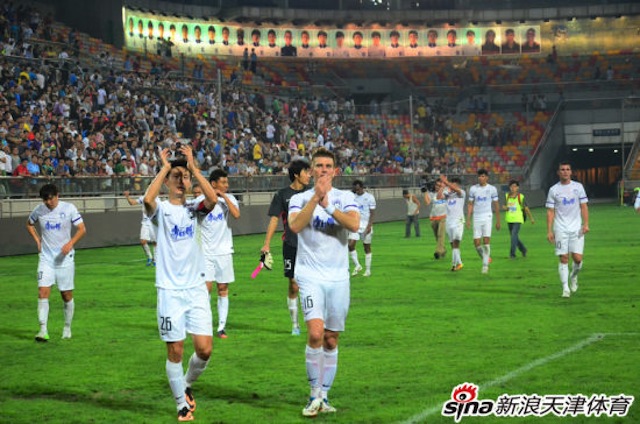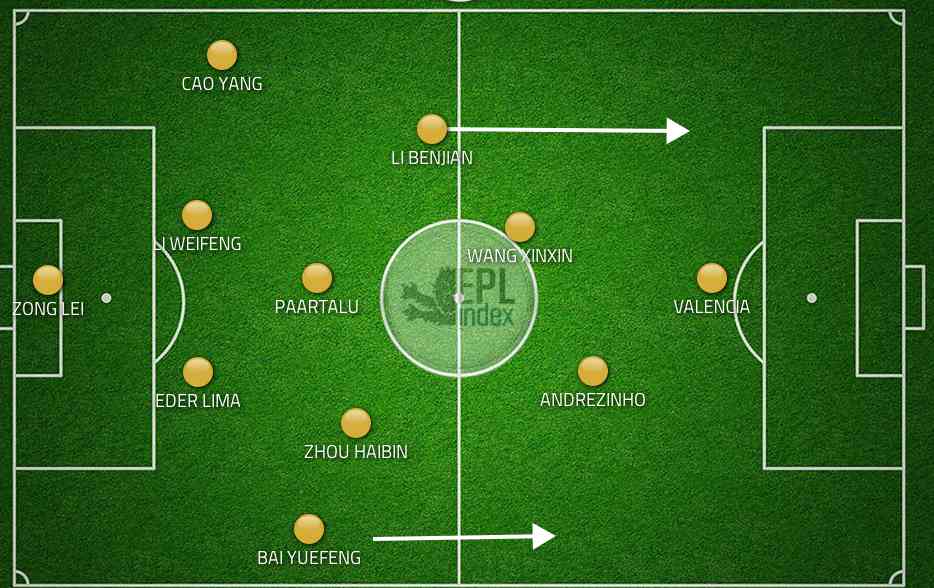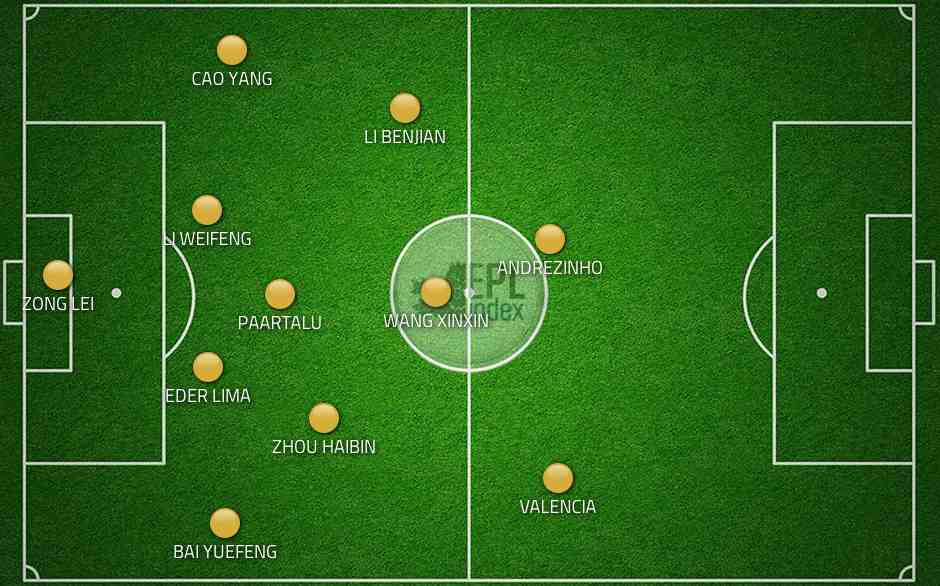Alexandre Guimaraes may have moved to Costa Rica during his teenage years and ultimately represented the Central American nation at international level, but there is a very Brazilian feel to his coaching at times that was clear in victory over Beijing Guoan this weekend.
Tianjin set up in a variation of the 4-2-2-2 formation that is somewhat alien to those versed in European football culture, but remains the staple of many coaches and managers in South America and Brazil in particular. Tianjin’s setup may be closer to a 4-1-2-2-1, with Eric Paartalu behind Zhou Haibin and Li Benjian in midfield, but it draws upon similar philosophies.
Pre-match, the tactic was described by commentators as a 4-2-3-1, with Li Benjian left and Wang Xinxin from the right. However, while Li played a shuttling role on the left, Wang Xinxin was very much part of a central attacking midfield duo with Andrezinho. With no real width on the right, it was then the responsibility of Bai Yuefeng to patrol the whole flank.
The result was that Tianjin always had a numerical advantage over their opponents in the middle, limiting the effectiveness of Guoan’s midfield play. Meanwhile, Zhang Xizhe’s willingness to head infield and the Zhang Xinxin’s lack of attacking threat—largely due to striker Carmelo Valencia’s inclination to drift right when out of possession—also meant that Bai Yuefeng was rarely troubled on his flank.
Tianjin were not particularly inspiring, but they negated any threat of Guoan. The tactic of aiming balls down the side of the defence for Utaka that worked so well against Guangzhou R&F was less effective on this occasion, despite the addition of Guerron’s pace. Tianjin played a much deeper defensive line, while the extra numbers in midfield also limited Guoan’s time to pick out the right pass—a factor which was added to by the absence of Piao Cheng from the Beijing side.
Li Benjian’s role was very important to the success. In the second half, as Guoan introduced more attacking options, Li dropped deeper to cover in front of Cao Yang at full-back. His work-rate in then pushing forward to support Valencia and Andrezinho in attacking areas also kept Guoan from being able to apply overwhelming pressure from the flank. With Li dropping back on the left and Wang Xinxin then playing a much more restricted role, Zhou Haibin was also able to offer support to right-back Bai Yuefeng.
The dynamics of their game were based on principles core to the psyche of modern Brazilian club sides. Australian midfielder Paartalu is the side’s central figure, as the central defensive midfielder, making more passes than any other player and, indeed, more tackles—he is in the CSL top 10 for both categories. Despite their woes early in the season, he was able to stand out and has benefitted also from the support offered by Zhou Haibin in recent games.
Of the attacking midfield duo, Wang Xinxin would then be described in Brazil as a No. 8—the more rounded player who also aids the defence. Andrezinho, meanwhile, is the side’s playmaker or No. 10—and thus was excused from nearly all defensive duties.
It is a system that is not meant to be particularly fluid, with the team very much compartmentalised into attack and defence. However, it is a setup that offers great core stability and, with the right players in place, then allows individuals to come to the fore in attack—as Andrezinho and Valencia have in recent weeks.
Set pieces will be important as an attacking avenue, with plenty of height throughout the side and if they can retain Zhou Haibin, they should have a strong core in place for next season.
They may not be the most fluid side in the league, but they will certainly be hard to beat and, in Andrezinho, they have a player with the quality to make the one or two passes per game that could be crucial to achieving their aims over the next 18 months.
Recent victories over Guangzhou Evergrande and now Guoan have seen Tianjin hit the headlines. Their rise, though, is the result of a tactical change over the last couple of months and a wise summer recruitment strategy.


